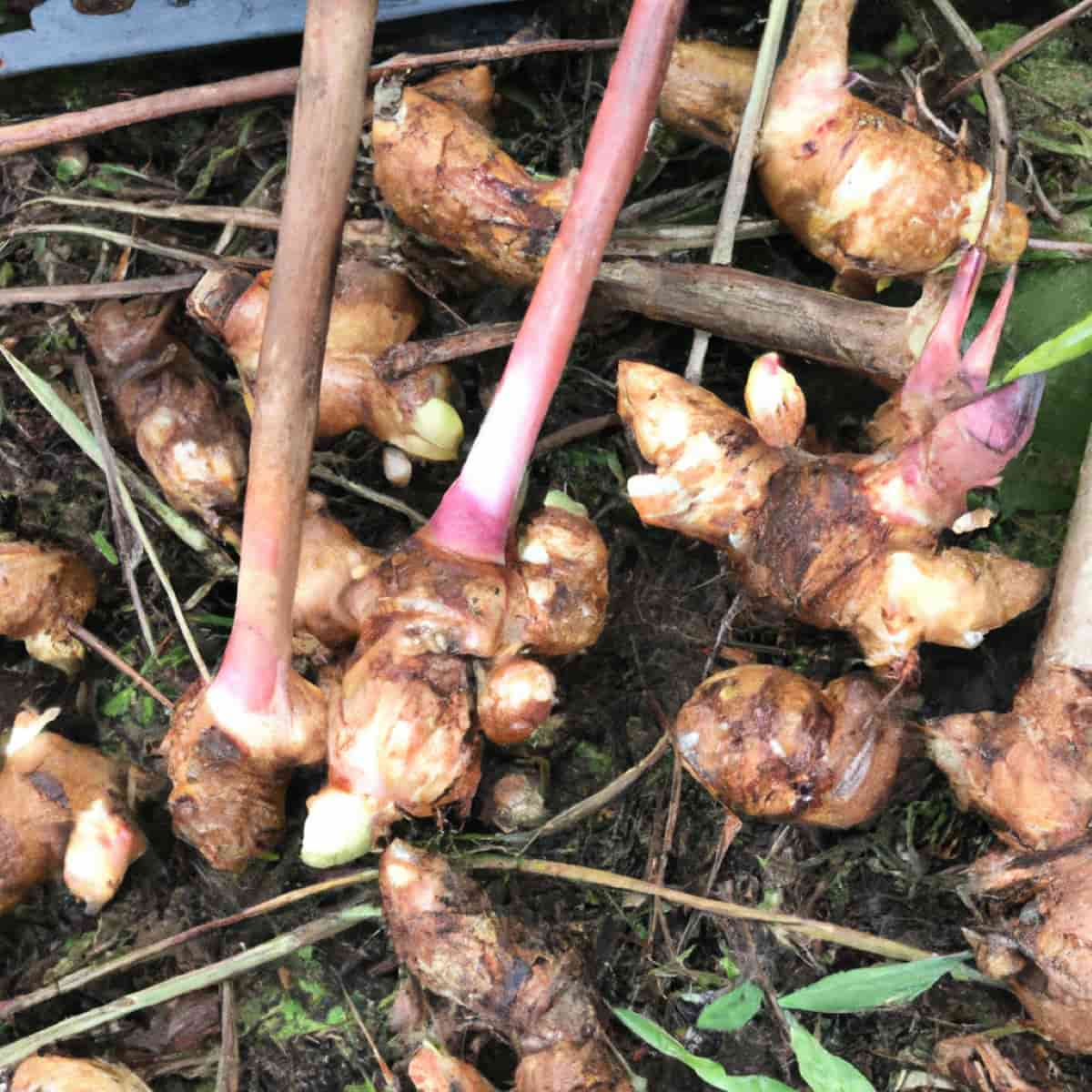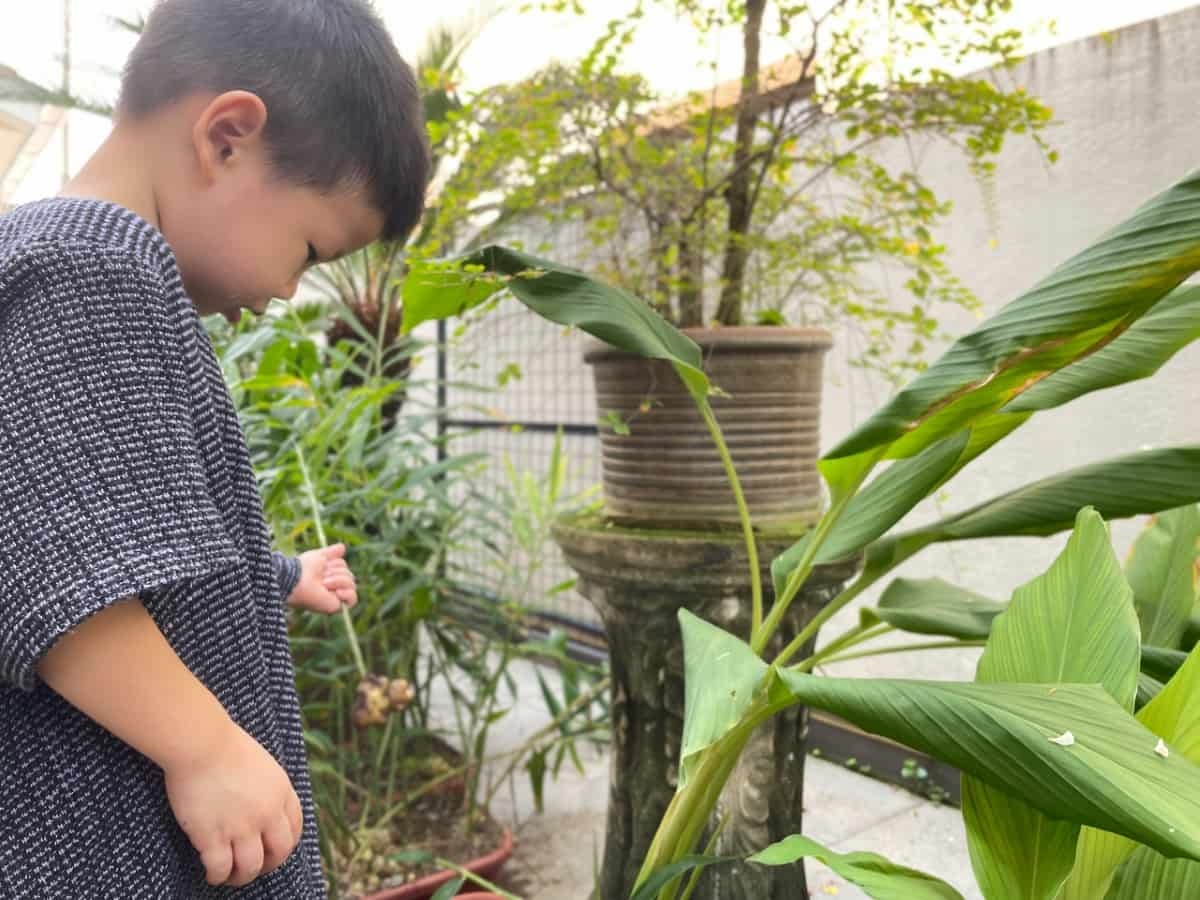Dying ginger plants can be a frustrating and devastating experience for any gardener. Ginger plants require abundant nutrients, sunlight, and water to thrive. Unfortunately, several causes can lead to a ginger plant’s demise. Understanding the causes of a dying ginger plant and how to fix it can help you save your beloved plant.

9 Causes of Dying Ginger Plants
Why is My Ginger Plant Dying in Summer Heat, and How Can I Save It?
As the temperature of the soil increases, the roots of the plant struggle to absorb the necessary water and nutrients from the soil. As a result, the plants become dehydrated and unable to survive in the intense summer heat. The ideal temperature range for growing ginger is 24-30 °C.
- To protect your ginger plants from sunburn, first, ginger plants thrive in partial shade, so choose a spot where they won’t get too much direct sunlight. You can move your ginger plant to a shadier spot or provide shade using a tarp or other material.
- Maintain consistent soil moisture during the summer months. Water your ginger plant regularly, ensuring the soil doesn’t dry completely. Adding a mulch layer to the soil can retain moisture and prevent evaporation.
Preventing Ginger Plant Death From Fungal Infections: Effective Remedies and Prevention Tips
Fungal infections are a common problem for ginger plants. Common fungal infections include Fusarium wilt, Rhizoctonia root rot, Pythium root rot, Sclerotium rolfsii, and Rhizoctonia solani. All of these fungal infections can cause serious damage to ginger plants, so it is important to be aware of the symptoms and take appropriate action if any of these infections appear in your ginger plant.
- Keep your ginger plants in well-ventilated areas. Poor circulation of air can contribute to fungal infections.
- Make sure that the soil is well-draining. Waterlogged soil can create an environment conducive to fungal growth.
- Provide your ginger plants with adequate sunlight. This helps to prevent fungal growth.
- Use fungicides to control fungal infections. However, read the instructions carefully and follow the safety precautions.
Identifying Nutrient Deficiencies in Ginger Plants and Remedies to Revive Them
Ginger needs a lot of soil nutrients to grow successfully. When ginger isn’t getting enough nutrients, the edges of the leaves will brown, while the centers will turn yellow. This is a sign that your ginger plant is malnourished, and you need to do something about that. Luckily, it’s not hard to fix.
- While ginger needs nutrients, it won’t need to be applied constantly. Giving ginger fertilizer two to three times a year should be enough. And if your ginger goes dormant in the winter, it won’t need more fertilizer until the spring.
- You can also use well-rotted and aged chicken manure as fertilizer. Another option is fish emulsion. Add them every 6-8 weeks in the growing seasons.
- If you use a liquid fertilizer, use one with an NPK of 10-20-20 only once a month. Apply the fertilizers 3-4 inches away from the gingers and not close to the plants.
How to Protect Ginger Plants from Pests and Diseases to Prevent Decline and Death
Many pests, like thrips, aphids, slugs, rhizome flies and scales, rose beetles, nematodes, etc., can harm and even kill the plant. Some bugs feed on the leaves and skeletonize them. Some bugs destroy the internal tissues, and some suck the plant saps and kill it.
- Use Neem oil to remove them. It is the best and most natural way to remove maximum bugs.
- Release natural predators for scales and aphids. They feed on them and make your plant bug-free.
- Spray 50% dichlorvos or 40% dimethoate to the soil to eliminate thrips.
Gingers affected by diseases will cause stunted growth and, ultimately, the death of the plant. You can fix some diseases, whereas most don’t have any fixation. Diseases like dry rot, fusarium yellow, leaf spots, mosaic virus, and bacterial wilt will kill the plant.
- If your gingers have rhizome rot, remove the infected leaves, stop watering, and treat the plant with fungicides.
- Plant some lemongrass or mint to let these plants release essential oils and kill pathogens.
In case you missed it: 9 Causes of Dying Cinnamon Trees and How to Fix Them?

Overwatering Issues in Ginger Plants: Signs, Symptoms, and Steps to Rescue a Dying Plant
The most common overwatering issues in ginger plants include root rot, wilting, and yellowing of leaves. Check the soil in the pot to determine if it is overly wet. If it is, it’s a sign the plant has been overwatered. When watering a ginger plant, use only enough to moisten the soil. Avoid overwatering by only watering when the soil is slightly dry.
Amend the soil with a mix of peat moss, vermiculite, and perlite in equal parts. This will help the soil to drain excess water. Keep in mind that mature ginger plants can grow to be 3-4′ tall. So use a large container at least 10 inches wide and 10 inches deep, with suitable drainage holes in the bottom.
Underwatering Issues in Ginger Plants: Signs, Symptoms, and Steps to Rescue a Dying Plant
If the maximum leaves of your ginger plants start turning brown and dry, you might feel it is dying. But, it is usually a sign that indicates that the plant is not getting enough water. When you cut ginger open, you will notice it contains plenty of moisture. It is a hint that ginger enjoys moisture. They cannot stand drought conditions.
The best way to specify the problem is to check the soil. If it is dry, water the plant. If it is wet, wait for the surface to dry out. Water the ginger plants at least 1-2 times weekly to moisten them. Check whether the soil’s top few inches have dried when you water the plant. Soak the soil thoroughly to maintain perfect moisture, around 60% if it has.
Ginger Plant Winter Damage/dying: Protecting Plants from Frost and Cold Temperatures
When exposed to cold temperatures, Ginger plant leaves may turn brown and wilt, and the plant may die. This is especially likely to happen in the wintertime when temperatures drop dramatically, and the plant is not used to the cold. Temperatures around 0°C and frost can damage the rhizome, leading the entire plant to die.
If you live in the colder zones, start growing ginger plants in pots. It makes shifting from outdoors to indoors easier. Place the plant near a sunny window, water sparingly, and don’t fertilize. If your rhizomes are in the ground, remove the vegetation above the soil and take the rhizomes inside. To protect from the cold weather, add a layer of mulch. Reduce watering and stop fertilizing.
Improper Pruning May Cause Ginger Plant Death: Pruning Methods for Healthy Growth
Improper pruning is one of ginger plants’ most common causes of death. Pruning is an important part of proper plant care and can help to encourage healthy growth. When pruning ginger plants, it is important to start with the oldest and toughest stalks. These should be cut near the base of the plant and removed completely.
Any stems that are weak or dead should also be removed. This helps to ensure that new shoots and leaves can grow in their place. Lastly, do not prune too often. Too much pruning can weaken the plant and cause it to become unhealthy. It is best to prune only when necessary to keep the plant healthy and growing strong.
Reviving a Stressed Ginger Plant: Rehabilitation Methods for Overall Recovery
When reviving a stressed ginger plant, a few different rehabilitation methods can be used to help with overall recovery. The first step is to identify the cause of the stress. It could be due to several things, such as too much direct sunlight, over or under-watering, or an insect infestation. Once the cause of the stress has been identified, the next is to address the issue and determine the best course of action for the plant.
- Provide the right amount of water and fertilizer. Providing the right amount of light is also important. Ginger plants prefer bright, indirect sunlight. If the plant is in a too-dark area, it may need more light to help it recover.
- The plant should be kept in a well-ventilated area and not exposed to too much heat or cold. To help create a good environment for the plant, it is also important to keep the humidity level in the area around the plant at a moderate level.
- Check the plant regularly to ensure it is growing and thriving. If it is not, providing additional care such as pruning, repotting, or even replacing the plant may be necessary.
In case you missed it: 9 Causes of Dying Sapodilla Trees and How to Fix Them?

Conclusion
A ginger plant dying doesn’t mean you can’t save your plant. If you observe and identify the signs and take immediate action, you can save your plant. But if you ignore the signs and let the plants be, your plant will ultimately die. If you are a beginner and confused about the signs, this article can help you out a bit to understand the problems, fix them, and bring the plant back.
- Feed Your Flock for Less: Top 10 Tips to Save on Chicken Feed
- Ultimate Guide to Ossabaw Island Hog: Breeding, Raising, Diet, and Care
- Hatching Answers: The Top 10 Reasons Your Chickens Aren’t Laying Eggs
- Eggs and Economics: Breaking Down the Cost of Raising Backyard Chickens
- Defend Your Greens: Proven Methods to Keep Iguanas Out of Your Garden
- Ultimate Guide to Cinnamon Queen Chicken: A Comprehensive Guide for Beginners
- Ultimate Guide to California Tan Chicken: Breeding, Raising, Diet, Egg-Production and Care
- Ultimate Guide to Marsh Daisy Chicken: Breeding, Raising, Diet, and Care
- 10 Types of Chicken Farming Businesses You Can Start for Profits